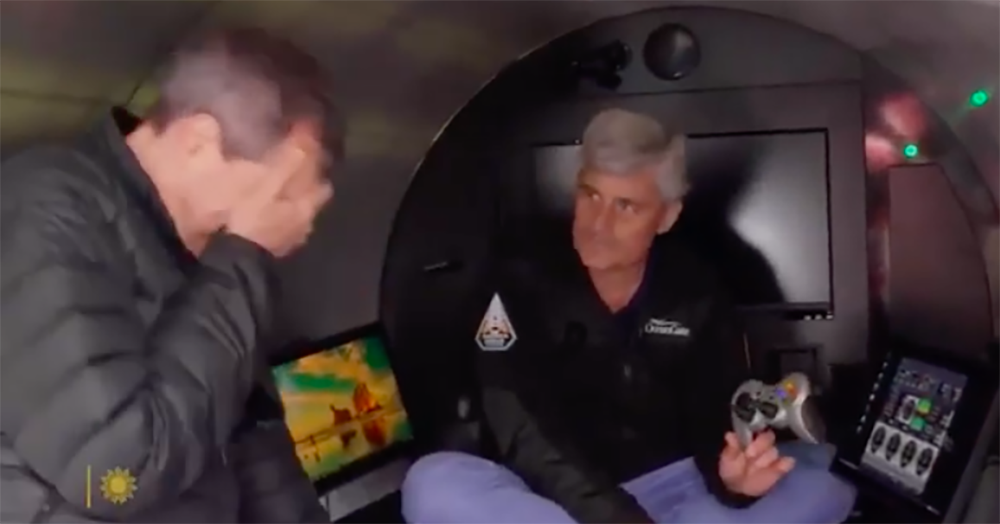The Titan submersible, which went missing while exploring the wreck of the Titanic, had five people onboard, including a former French navy diver, as well as British and Pakistani businessmen, BBC reported.
This includes Stockton Rush, the chief executive officer of OceanGate — the firm that operates the expeditions.
OceanGate was quoted by the New York Times as saying that he had been the Titan's pilot when it went missing.
According to the U.S. Coast Guard, the research vessel from which the submersible was launched said it lost contact with the crew about one hour and 45 minutes into the dive, at 9.45am on the morning of Jun. 18 (9.45pm Singapore time).
By the time the submersible was reported to have gone missing, it was estimated to have about 40 hours of oxygen left, CBS News reported.
Oxygen could run out by June 22, 6pm Singapore time.
Where is the submersible lost?
The submersible went missing 900 miles (1,450km) east of Cape Cod, a town on the Atlantic coast of the U.S. in the state of Massachusetts.
The area in which it went missing has a depth of about 4,000m.
Search teams from both the U.S. and Canada have been deployed, covering an area of almost 19,700 sq km.
Who are the people onboard?
The CEO
Rush first founded OceanGate in 2009, with the aim of offering clients an opportunity to experience deep sea travel.
The firm began offering trips to the Titanic wreck in 2021, for US$250,000 (S$335,770) per ticket.
The trip consists of taking a ride on a larger ship to the area above the wreck, whereupon clients board the Titan submersible for an eight-hour dive down to the Titanic.
Rush is also an engineer who has experience working on other small submersibles.
Rush has also criticised safety standards as a stifling presence on innovation.
An article by the Smithsonian Magazine quoted him as saying, "There hasn’t been an injury in the commercial sub industry in over 35 years. It’s obscenely safe, because they have all these regulations. But it also hasn’t innovated or grown—because they have all these regulations."
Ex-French Navy diver known as "Mr Titanic", Pakistani businessman and son among passengers
Another notable passenger is Paul-Henry Nargeolet, a former French Navy diver.
He is also known by the nickname "Mr Titanic" as he had been part of the first expedition to visit the wreck of the Titanic in 1987, two years after it was discovered in 1985.
In addition, Nargeolot is the director of underwater research at a company which owns the rights to the Titanic wreck.
The remaining three passengers are Pakistani businessman Shahzada Dawood and his 19-year-old son Suleman, and Hamish Harding, a British aviation executive, according to the Financial Times.
Submersible controlled by wireless Logitech video game controller
One of the more prominent features of the submersible that has emerged is that it is steered by a Logitech G-F710 video game controller, released in 2011.
The Washington Post reported that while the use of video game controllers have become a regular feature for military vehicles, the most notable feature of the Titan is that its controller is wireless and operates via Bluetooth.
In comparison, the controllers used in military vehicles are wired in, which means there is no risk of radio transmission or issues pertaining to radio transmission.
Titanic expedition firm warned five years ago about disaster due to its "experimental" approach
NYT also reported that in 2018, Rush and his firm were warned by experts and OceanGate's then director of marine operations, David Lochridge, that the mission to visit the Titanic in a submersible could face "catastrophic" problems due to OceanGate's "experimental" approach.
In particular, Lochridge and experts had highlighted Rush's refusal to have the submersible properly inspected and certified.
The director said he had been told OceanGate was unwilling to pay for such an assessment.
Lochridge also said that the submersible's viewpoint was only certified to work in depths of up to 1,300m and claimed he had been fired by OceanGate after he questioned the safety of the Titan.
In a lawsuit filed by OceanGate against Lochridge for leaking confidential information outside the company, the firm said Lochridge was an engineer and refused to accept information from the company’s engineering team.
The company also said "acoustic monitoring" of the hull’s strength was better than the kind of testing that Lochridge felt was needed.
In 2019, OceanGate put up a post in which it explained why the submersible was not classed.
Knocks heard in the search area
On Jun. 21, shortly after noon, Singapore time, the U.S. Coast Guard tweeted that a Canadian aircraft had detected underwater noises in the area.
However, searches by remote operated vehicles (ROV) have yielded negative results thus far, the Coast Guard added.
The data has also been shared with experts in the U.S. Navy for analysis.
Additionally, the data from the P-3 aircraft has been shared with our U.S. Navy experts for further analysis which will be considered in future search plans. 2/2 #Titanic
— USCGNortheast (@USCGNortheast) June 21, 2023
Meanwhile, CNN reported that it had seen an internal U.S. government memo which said sonar had picked up banging sounds underwater on Jun. 20, Eastern Standard Time.
The banging sounds were detected every 30 minutes.
However, the memo did not specify when the sounds were heard or how long the banging lasted.
An update to the memo subsequently stated, "Additional acoustic feedback was heard and will assist in vectoring surface assets and also indicating continued hope of survivors."
Top screenshot via New York Post/YouTube
If you like what you read, follow us on Facebook, Instagram, Twitter and Telegram to get the latest updates.

